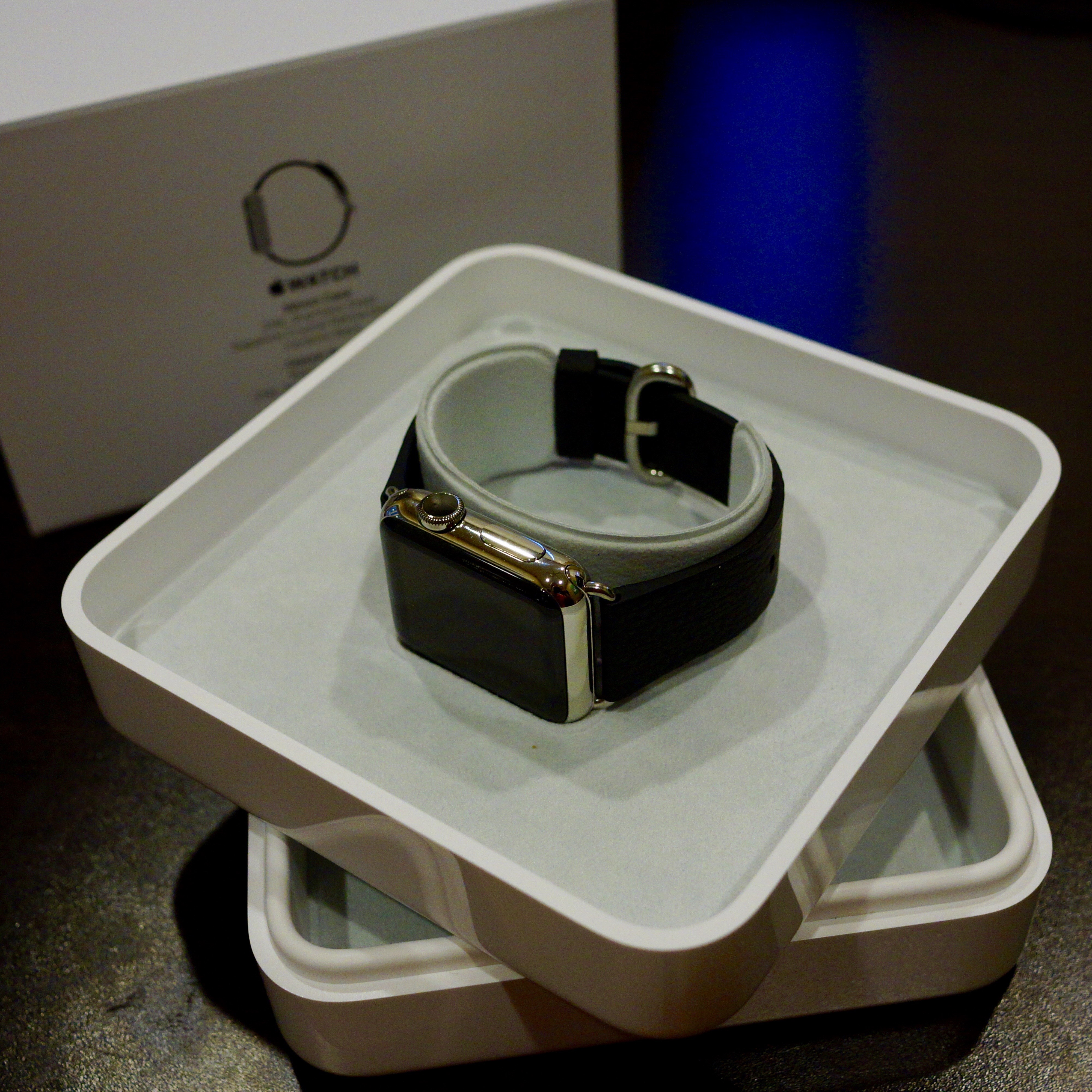Photovoltaic cells were invented in the 1940s, and Patek Philippe produced a novel clock that used them. Once integrated circuit technology improved enough to build a quartz watch, American inventor Roger Riehl created the first solar-powered watch. His Synchronar paved the way for the solar digital watches that brought the technology to the masses in the 1970s. Then there was Uranus, with their wild calculator watch!
Patek Philippe’s Solar Clock
The idea of powering a clock with a photovoltaic solar cell predates the electronic clock itself. And it comes from an unlikely source: Patek Philippe showed a photoelectric powered clock at the Basel Fair in 1952! And it wasn’t the only such clock produced at that time, with an unnamed German inventor also credited for a similar design.

Image: Europa Star Eastern Jeweller 18, 1953
This was a conventional mechanical clock paired with a photoelectric-driven motor to wind the mainspring. It is said that 4 hours of light was enough to keep the clock running “perpetually”. The tiny amount of electricity produced was sent directly to a small motor, which turned a gear with a 10,000:1 reduction to give enough torque to wind the spring.
A photoelectric-powered mechanical clock designed for Ethiopian Emperor Haile Selassie was featured in Europa Star in 1957. Clearly such clocks were being produced at that time.
In 1965, Seiko showed the first “photoelectronic clock”, which used a photocell to charge a nickel-cadmium battery. This was used in turn to power the electric clock movement. Like the Patek Philippe, Seiko’s clock required just four hours of light to run continually.
Synchronar: Solar Digital LED
The solar-powered watch was patented in 1969 by the United States Time Corporation, better known for their mass-market Timex watch. But Timex wasn’t the first to conceive of such a watch and never moved to produce one.
As I discussed in my history of the Swiss Beta 21 quartz watch project, the digital electronics required to support quartz clocks required much more power than a photocell could produce. Although many envisioned a solar-powered quartz clock, it was simply impossible to make such a thing work. Once the Quartz Astron, Ultra-Quartz, Beta 21 and other quartz watches were launched in 1970, it was clear that a solar watch could work.
American inventor Roger Riehl had been working on prototypes of solar-powered electronic wristwatches since the mid 1960s, and saw the potential of low-powered CMOS integrated circuits. Once Hamilton launched the Pulsar P1 LED watch on April 4, 1972, Riehl decided to use this technology. He partnered with Palo Alto, California electronics company Ness Time to produce a solar-powered digital watch.

The Synchronous Chronometer Calendar (“Synchronar”) used two large solar cells on the top of a “casket” shaped watch. These powered a battery, which ran a quartz movement with a CMOS integrated circuit chip. Riehl implemented a perpetual calendar that tracked the date through the year 2100, a novel feature at the time for any watch, let alone a digital one. The watch is sometimes called the “Synchronar 2100” to reflect this calendar capability. Display was handled by a simple one-line LED display facing the wearer, with two sliders to control the watch.
Although there is some conflict about the timeline and development, Riehl’s “Synchronar” was shown at the R.J.A. Fall trade fair in July 1973. Ness Time brought the watch to the Basel Fair the following Spring and it was featured in Europa Star. But Ness Time was unable to bring the watch to production and sale.

Riehl apparently joined Whippany, New Jersey-based Ragen Semiconductor later that year to lead development of the Synchronar. Another American company, Optel, showed the watch at the Basel Fair in 1975. Now dubbed the “Solar II”, it was part of a range of LED digital watches shown with Optel partner Euro-Time. Ragen displayed the Solar II at Basel in 1976, with Euro-Time apparently moving on, but the company discontinued the watch later that year. Riehl formed his own company later that year, and continued production of the Synchronar until 1983.
More LED Solar: Uranus Electronics

Image: Europa Star Eastern Jeweller 140, 1975
Another American company, Uranus Electronics, was also developing solar LED watches at that time. They showed a more conventional solar LED watch in 1975, with both solar cells and the display on the face of a cushion case watch that resembled many others in the market at that time. This watch was simply called the Uranus Solar-LED and positioned the solar cells below the display.
It is not clear whether Uranus brought this model to market or when, though it was certainly shown in 1975. Given Riehl’s challenges, is possible that it reached production and sale before the Synchronar. But this seems unlikely.
Uranus is better remembered for their radical calculator watch, which appeared later in 1975. It had a large “helmet” case with 12 buttons around a central LED display. Most examples are powered by a conventional battery or use a special charger, but Uranus also showed a solar-powered version. As documented at Crazy Watches, these are roughly finished but include the provision for this solar panel. It is not clear what these watches were called, but the circuit board shows “C25”.

Image: Europa Star 95, 1975
The Grail Watch Perspective: Riehl’s Synchronar Pioneered the Solar Watch
It is unclear how many examples of Riehl’s Synchronar were produced, but a few have turned up in various collections. And Riehl’s son was said to be producing and selling the watch into the 2000s. Although it is not widely known, the Synchronar is credited by most scholars as the first solar-powered wristwatch. Although Uranus also showed solar LED watches at this time, theirs are even more rare than Riehl’s. So one must give precedence to the Synchronar. In the next post, I’ll take a look at Cristalonic, the first mass-produced solar digital watch, which brought LCD technology to the party.






Leave a Reply